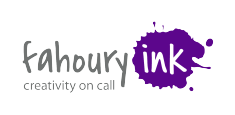The creation of marketing content is a collaborative process. First, there’s the client/stakeholder, whose budget and objectives are driving the project. Then there’s the creative team, which usually means a writer and designer, but could also include a creative director, web developer, project manager and other miscellaneous and sundry vendors or departments.
Before you embark on that breakthrough marketing piece that’s going to overfill your funnel with fabulous prospects, it’s wise to clearly define the project and its goals so all contributors are on the same page.
A good creative brief can do this, ensuring that your content produces the desired effect. That’s why every marketing initiative, no matter how small, should begin with a well-written creative brief.
What is it? A short document that names and fully describes a marketing project, be it a digital campaign, a piece of sales collateral, a landing page or a print ad. The creative brief helps ensure that everyone involved in the project is crystal-clear on the background, goals, deliverables and deadlines.
Stay on track and on budget
So, who needs a creative brief? If you create or manage any kind of content, you do. Not only will it eliminate any confusion about what you’re hoping to achieve, it will save time and money by avoiding the costly wrong turns that inevitably occur when everyone on the team doesn’t fully understand the project.
Most freelance copywriters and designers use creative briefs, as do other creative service providers such as photographers. Virtually all agencies and marketing companies use them too, though they may use different names to describe them, like Scope of Creative or Marketing Brief.
If you hire an agency for a project, you should expect them to send you a brief to complete, or to supply you with a preliminary brief they’ve already filled out based on the project information provided. But briefs aren’t limited to outside vendors or agencies. If you have an internal content development team, they’ll welcome the information, too.
Create a brief that meets your needs
Just Google “creative brief” and you’ll find no shortage of opinions on what a creative brief should look like. But as any Googler knows, too much information can be difficult and time consuming to sort through. So here’s a rundown of the key elements of a creative brief:
- Summary: A brief description of the project and its parameters.
- Background: How the assignment came about. Ex. “To broaden awareness of Spiffy Kleen in the residential cleaning industry.”
- Target audience: What group(s) are you talking to? Be as specific as possible on the intended audience, its mindset, level of sophistication, and buying motivations.
- Objective(s): What do you hope the project will achieve? How do you expect your target audience to respond to the marketing message? Example: “To establish a market for and increase sales of Spiffy Kleen to residential clients.” Be sure to clarify if the piece should drive sales or simply generate leads.
- Message(s): What is the primary message that you want the marketing piece to convey? Is there a secondary message?
- Mandatory elements: What information must appear in the copy? For example, the majority of marketing pieces will require contact information — phone, email, URL, etc. — but most also require a call to action, such as visiting a website or calling an 800 number. In addition, what logos, photos, or charts will be used, and who is supplying or creating them?
- Deliverables: What is the client expecting to receive at the conclusion of the project? What has the creative partner agreed to provide? In what format?
- Timeline: Has a schedule been established? What are the deadlines for completion of various stages?
- Budget: How much money has been allotted for the project? Does this number include production, or simply creative development?
- Approvals: Who is the main client contact on the project; who has final approval on the work? Do multiple stakeholders need to review the work at various stages of the creative process?
More than anything else, your creative brief should clarify the assignment for everyone involved. If details are spelled out in no uncertain terms, there’s much less chance that a project will get sidetracked or fail to generate the expected response.
Ideally, a well-designed creative brief is a document that can help you get what you want. And who could argue with that?

